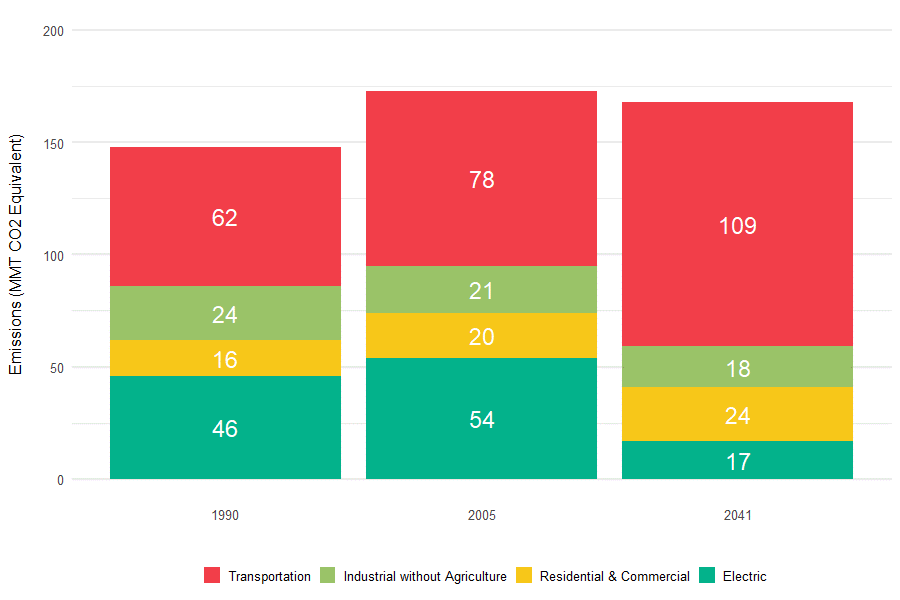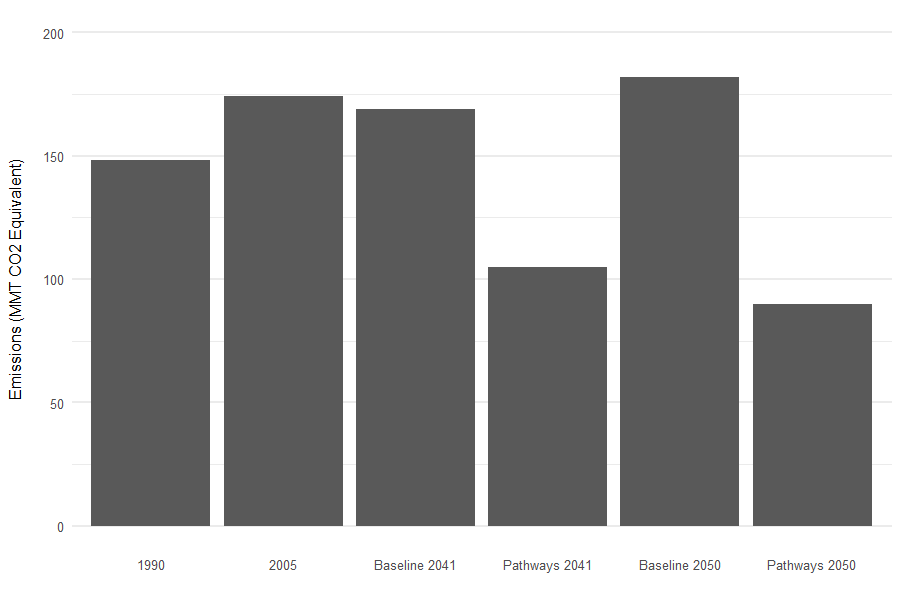The states of Oregon and Washington have set goals and limits on future greenhouse gas emissions. Oregon’s goal is to reduce emissions 80 percent below 1990 levels by 2050. Washington’s goal is to reduce emissions 95 percent below 1990 levels and be at net-zero emissions by 2050.
These goals are economy wide and decarbonization policies will impact the electricity sector due to conversion from other fuels. To analyze the impacts on the electric system in this scenario, the Council forecasted the region’s demand for natural gas as well as transportation fuels. Including the impact of emissions from the use of these fuels, the resulting estimates show that regional emissions will rise compared to 1990 levels in our baseline conditions.[1]
Expected Sector Emissions Based on Baseline Conditions

By 2041 under baseline conditions for the analysis, most regional emissions will be associated with the use of fuel for transportation. One potential approach to reducing emissions in the transportation sector would be the electrification of transport and potentially the production of hydrogen through electrolysis as a non-greenhouse-gas-emitting fuel for use in vehicles or other applications. The analysis shows it would be possible to reduce emissions by almost 27 percent by 2040, but it would require more than 12 gigawatts of additional electricity to meet the demand that new transportation technologies would place on the electricity grid.
However, even adding the reduction from aggressive electrification of transportation (Using the H2E case from the transportation model) with a collection of equally aggressive policies to reduce other emissions in the broader regional energy sector, the analysis does not show a path to getting to the targeted reductions within the energy sectors using the current technologies. The policies the Council tested include replacing gasoline vehicles with electric ones as well as updating the efficiency of appliances and equipment in homes, businesses, and manufacturing at an accelerated - but possibly - obtainable pace.
Regional Emissions from Energy Used in Residential, Commercial, Industrial, Agriculture, and Electric Utilities

There are additional mitigation strategies that could be implemented to further reduce emissions. These non-energy opportunities include, for example, improvements to industrial processes, reduction in use of high-greenhouse gas refrigerants, modifications to food production and consumption, and an increase in available carbon sinks (natural sinks and carbon capture technologies). More description on these and other potential mitigation options can be found here.
Looking at the scope of change in this analysis, the Council decided the incremental demand to the electric system was beyond the resource expansion that could be supported by the structure of our analysis. Details on this can be found here.
[1] Industrial, residential, and commercial emissions reflect those from end-use consumption of natural gas.



